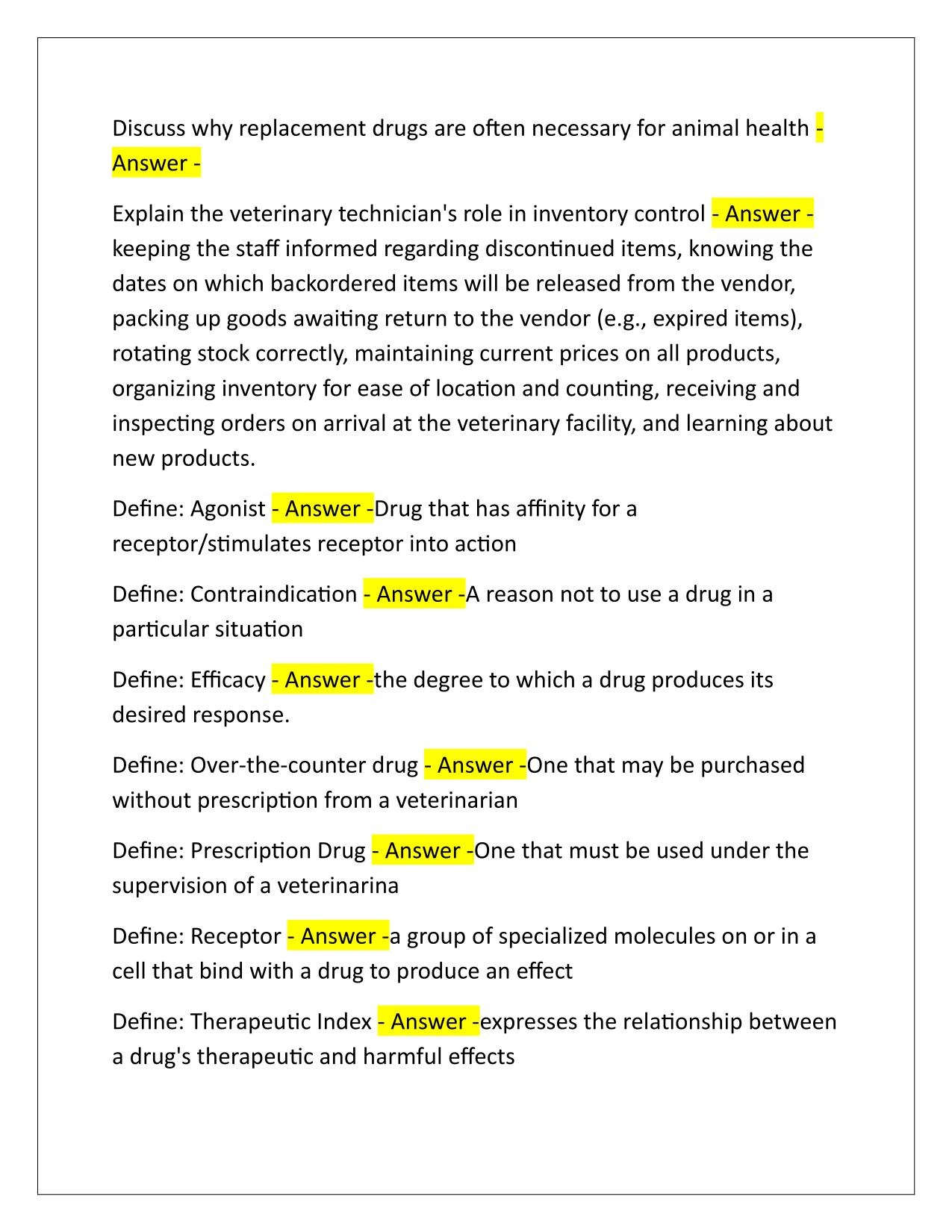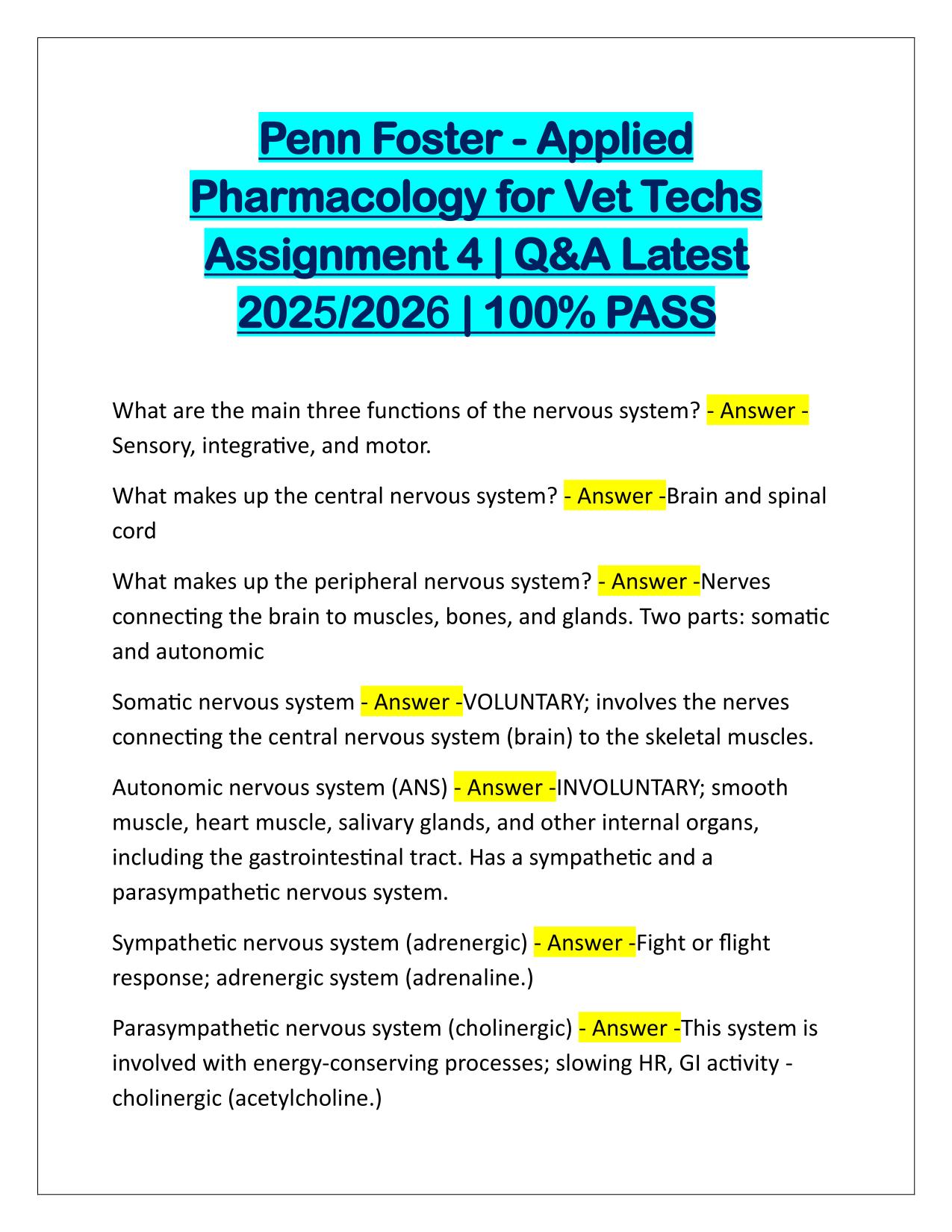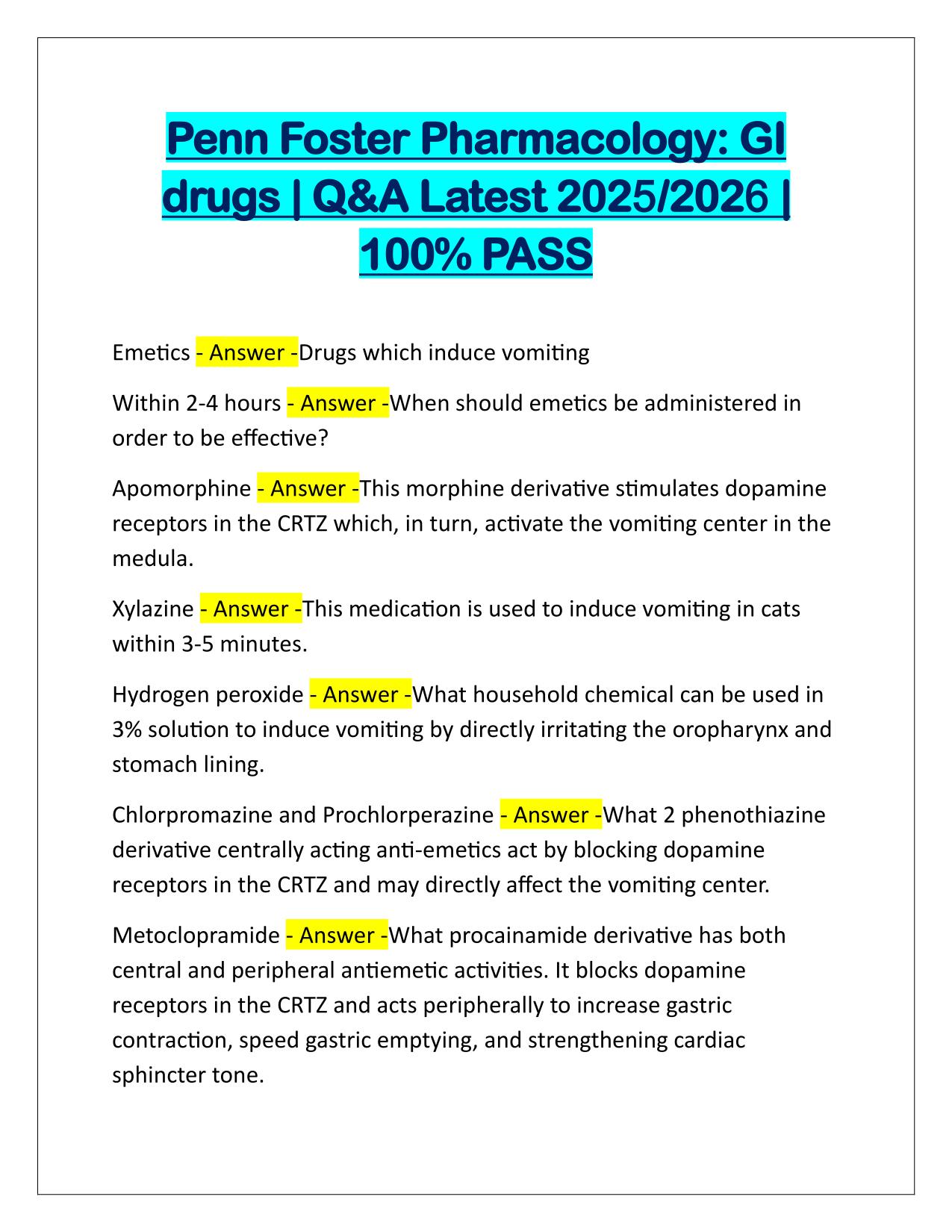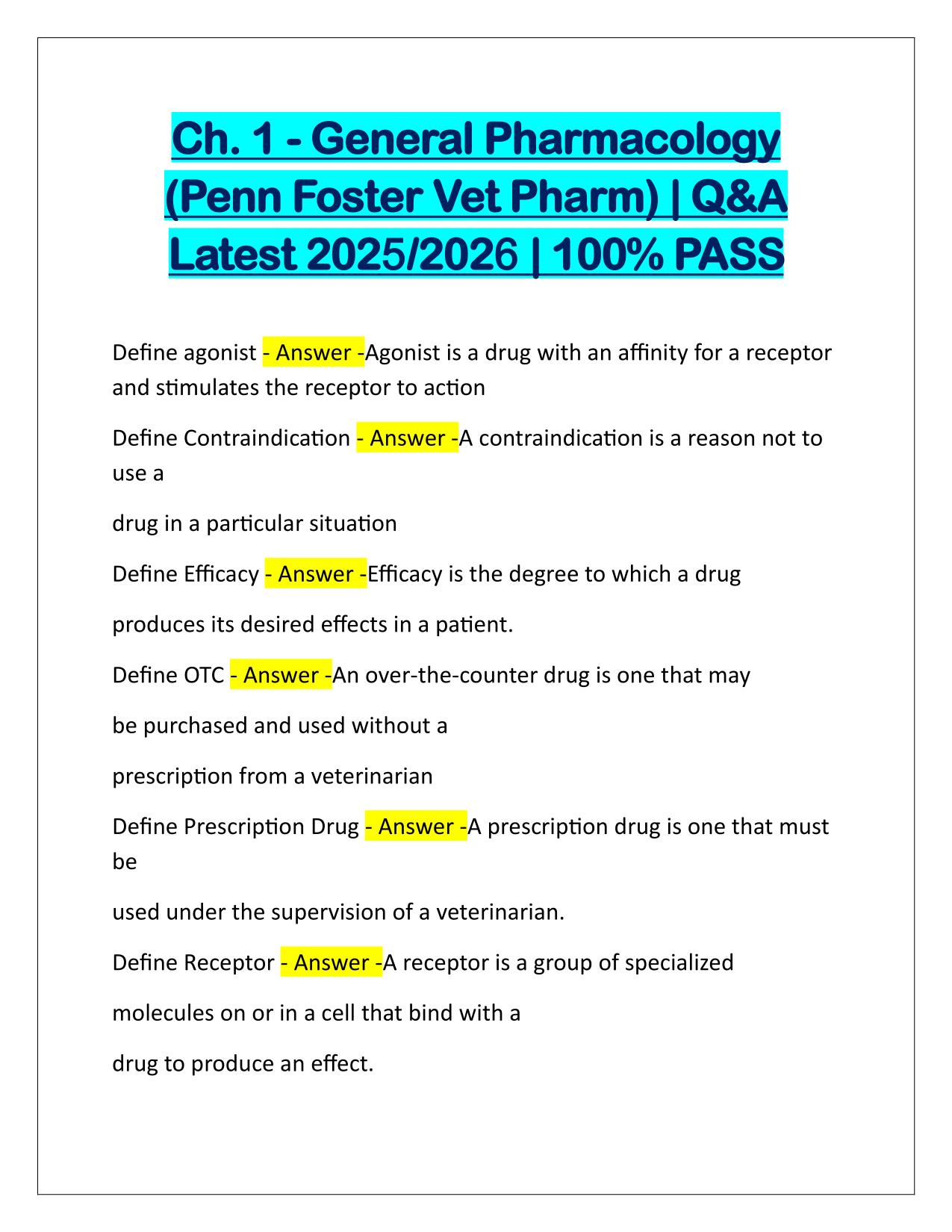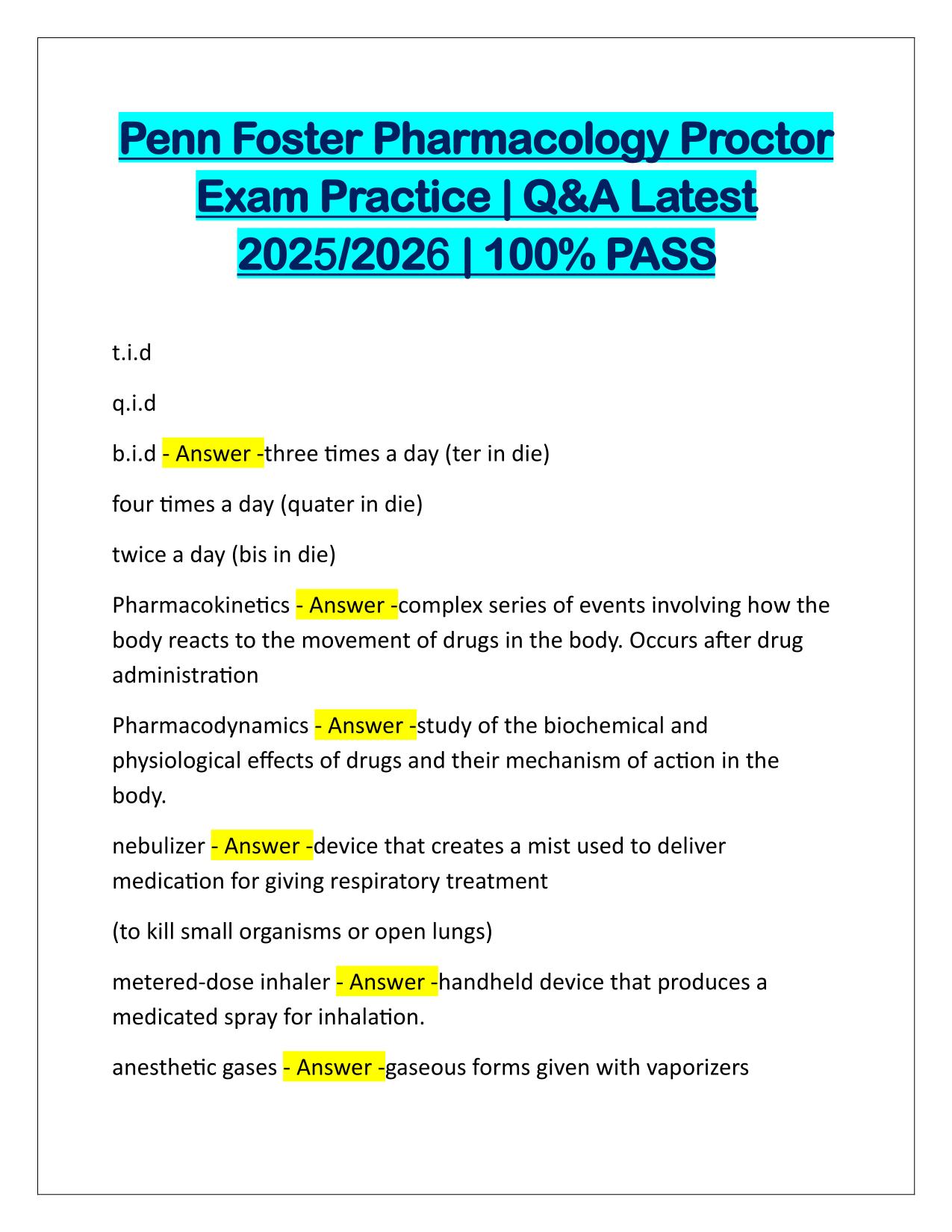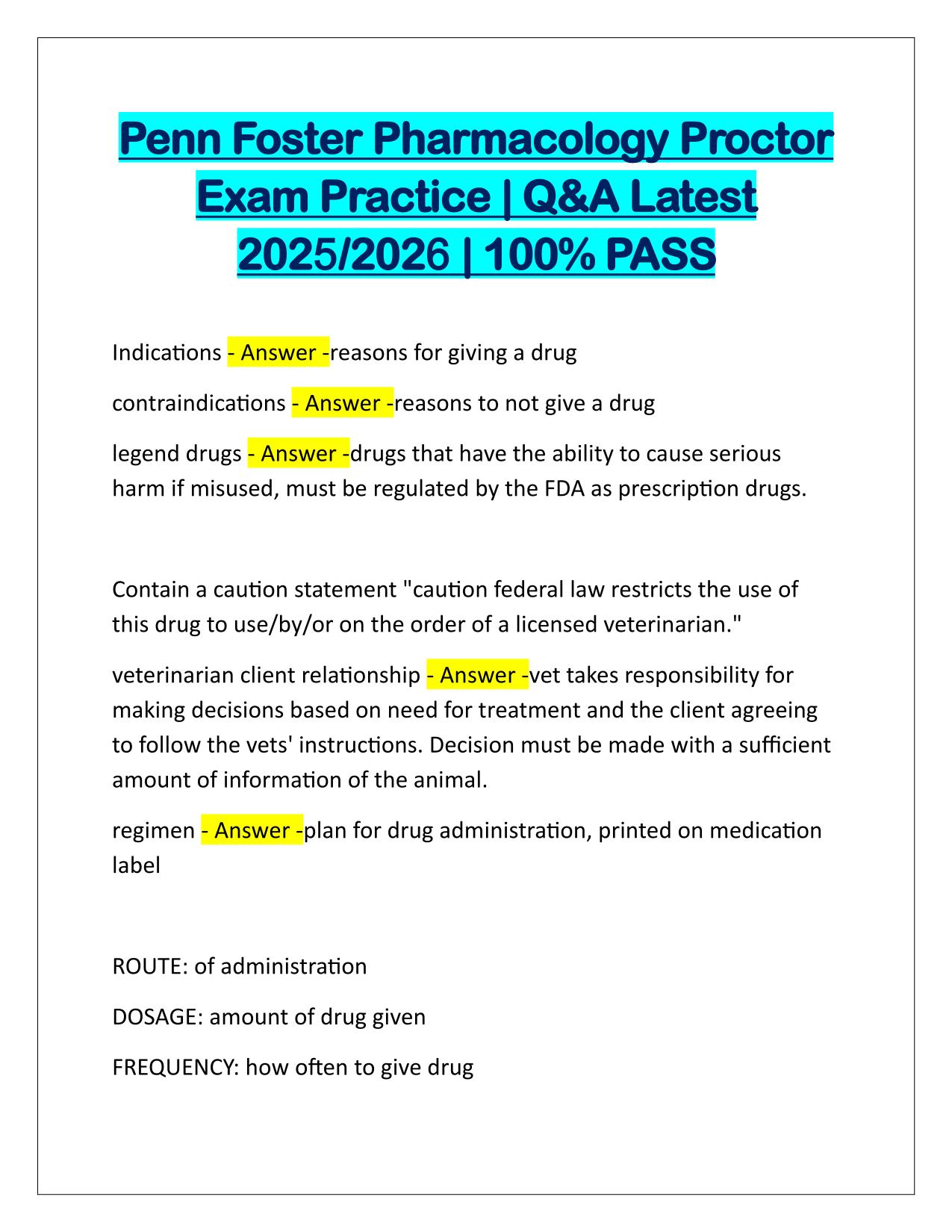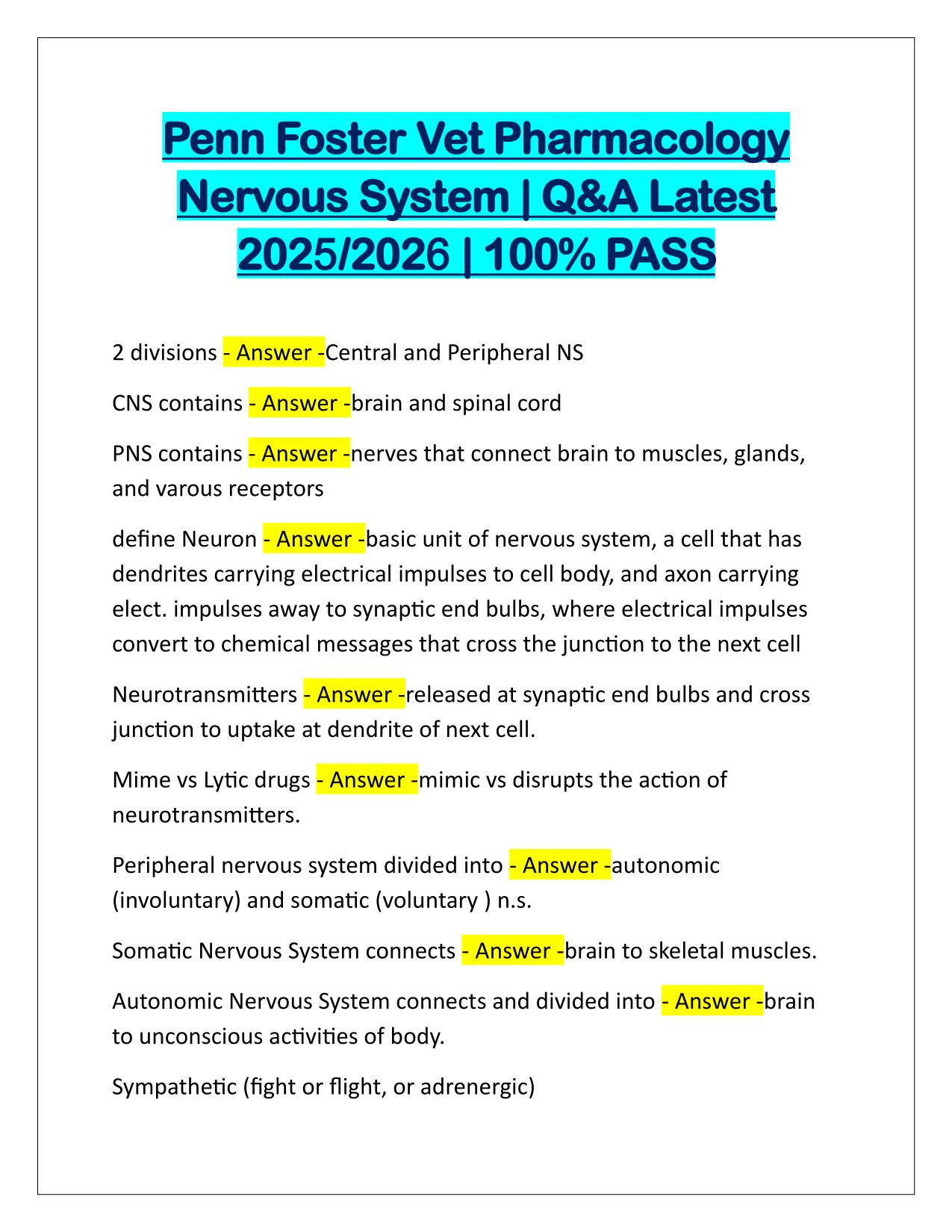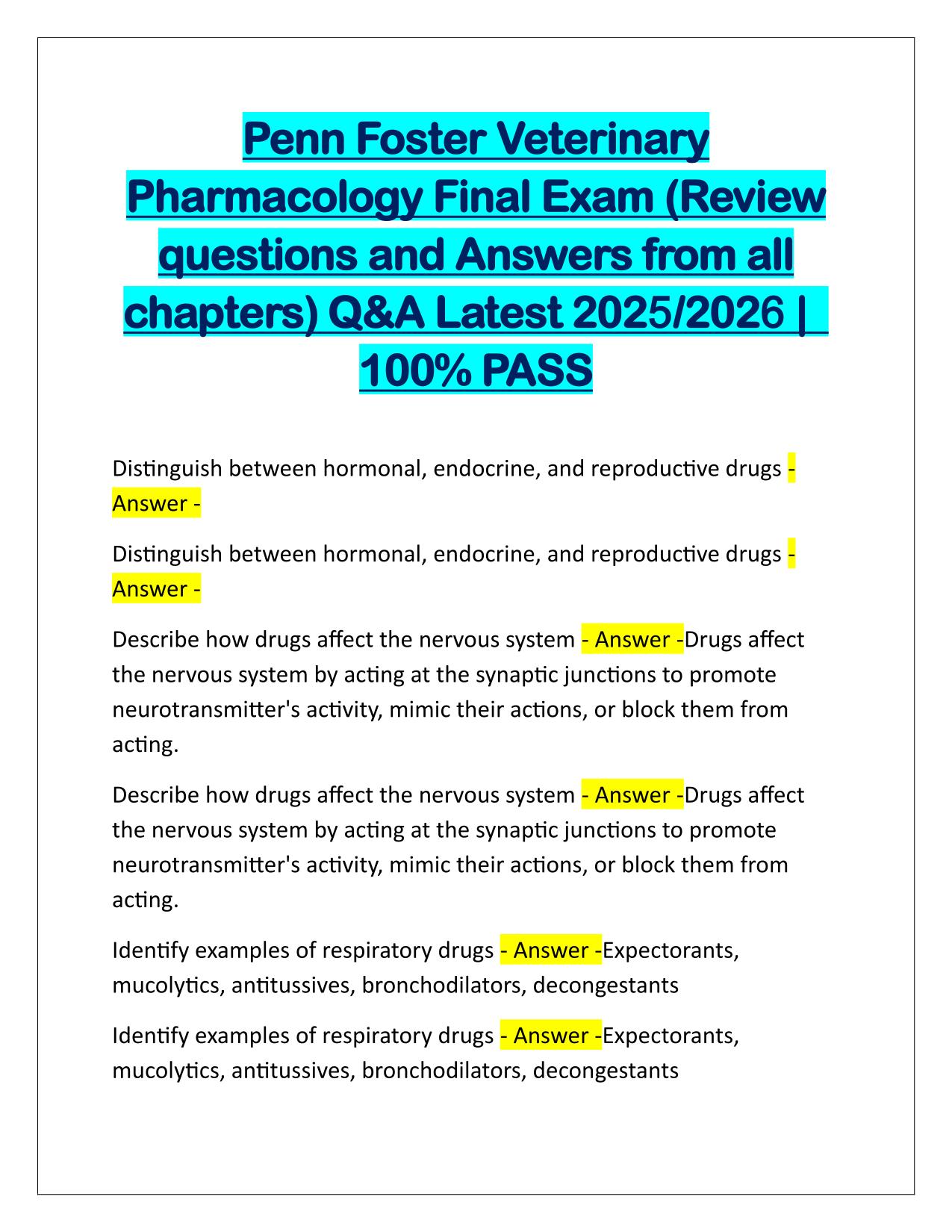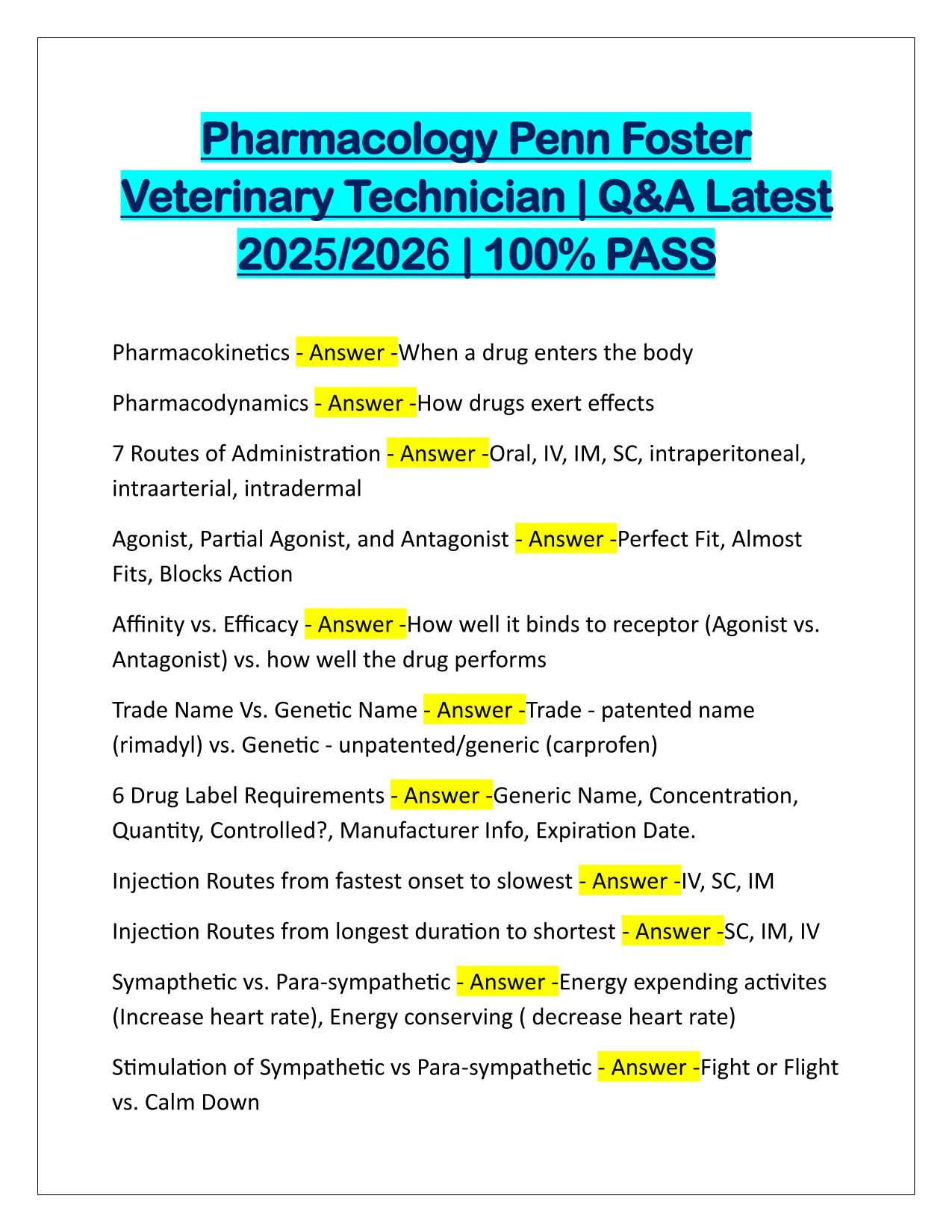Penn Foster Veterinary Pharmacology Final Exam Q&A Latest Update 2025-2026
Course:
Penn Foster
Institution:
Penn Foster
Penn Foster Veterinary Pharmacology Final Exam Q&A Latest Update 2025-2026
After purchase, you get:
✅ Instant PDF Download
✅ Verified answer explanations
✅ Refund if not Satisfied
✅ Prepared for 2025/2026 test cycle
Document Information
| Uploaded on: | May 8, 2025 |
| Last updated: | July 15, 2025 |
| Number of pages: | 55 |
| Written in: | 2025/2026 |
| Type: | Exam (elaborations) |
| Contains: | Questions & Answers |
| Tags: | Penn Foster Veterinary Pharmacology Final Exam Q&A Latest Update 2025-2026 |
Seller Information

AdelineJean
User Reviews (0)
Exam (Elaborations)
$10.00
Bundle Deal! Get all 11 docs for just $22.00
Add to Cart
100% satisfaction guarantee
Refund Upon dissatisfaction
Immediately available after purchase
Available in Both online and PDF
$10.00
| 0 sold
Discover More resources
Available in a Bundle
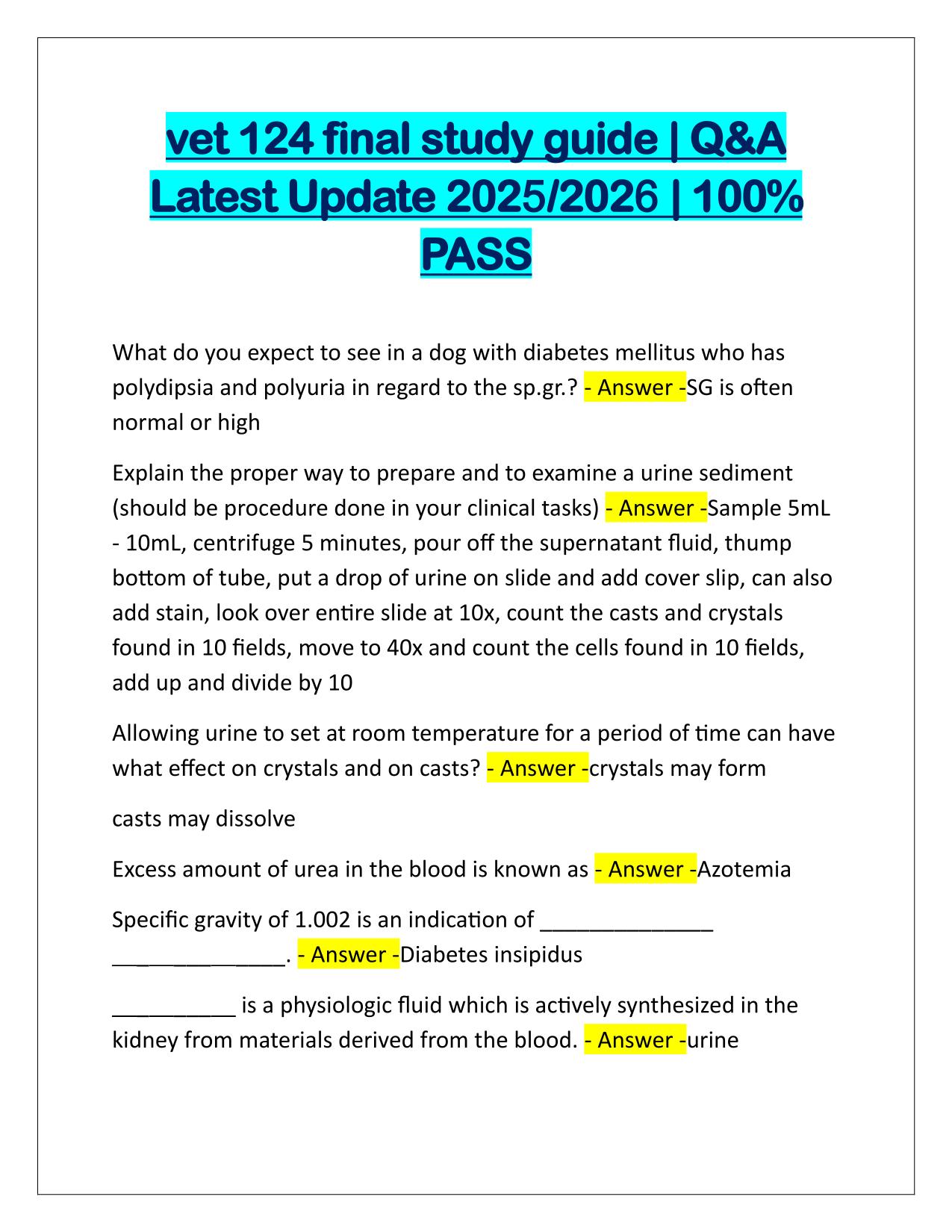
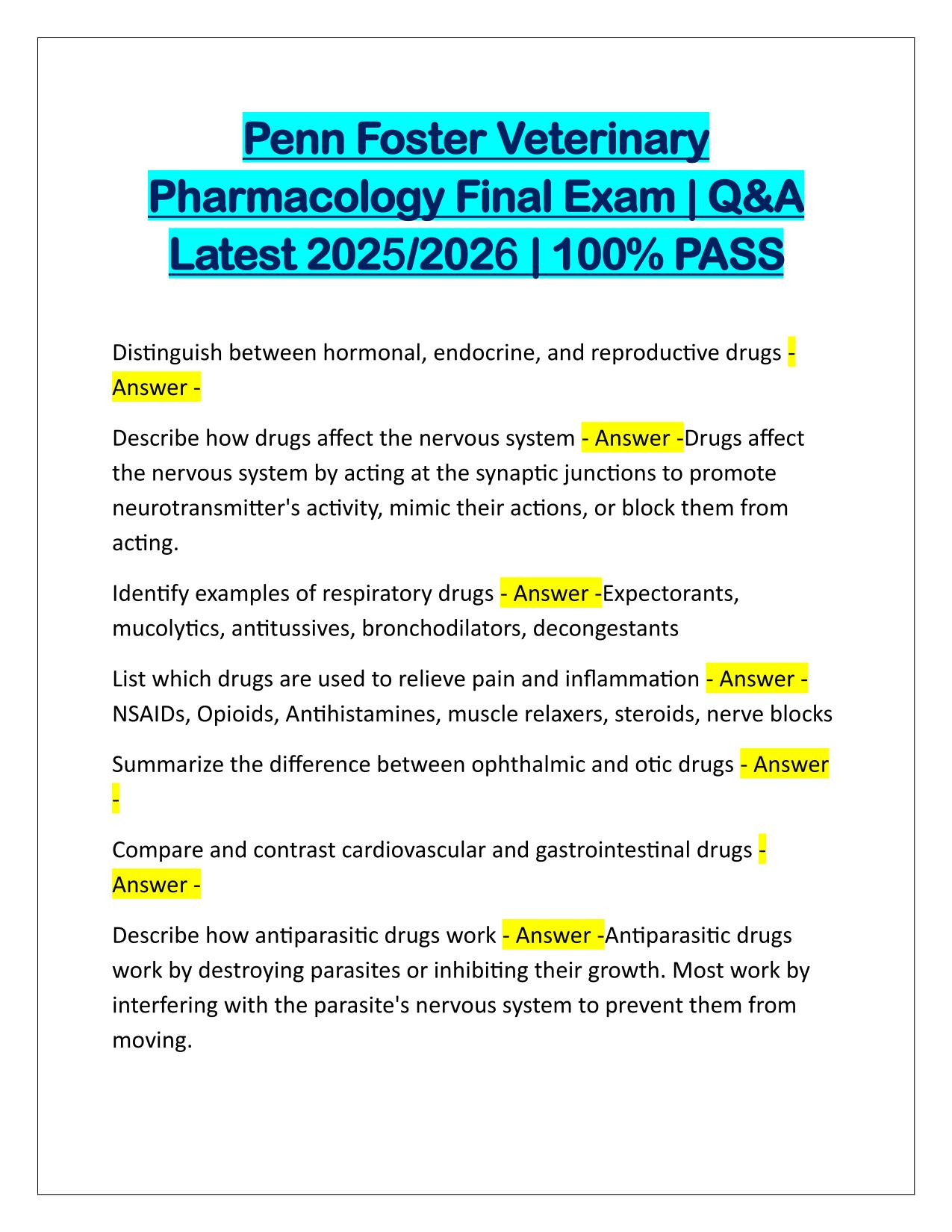
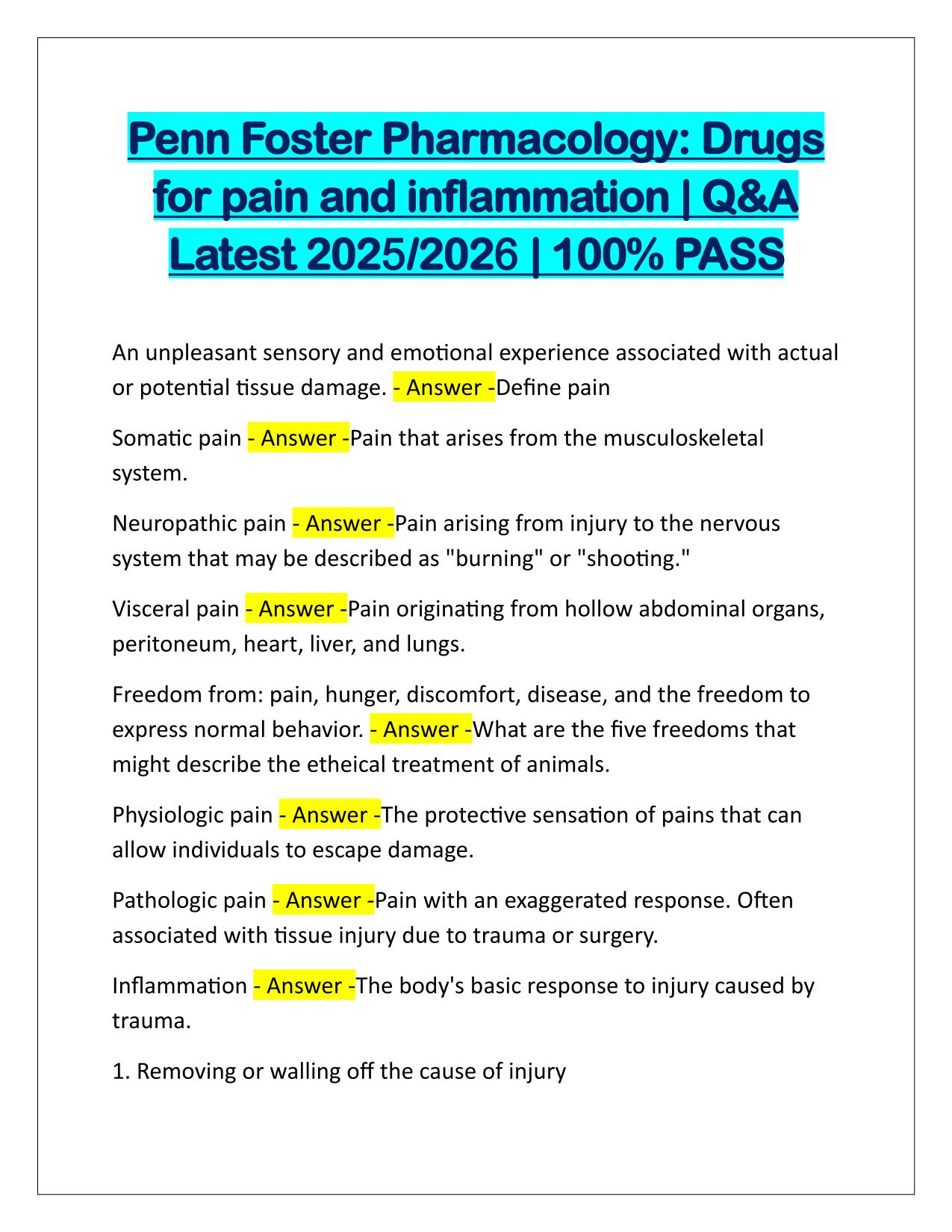
Bundle for Penn Foster Vet Pharmacology EXAMS Q&A Latest UPDATE 2025-2026
Includes 11 Documents
$22.00
Content Preview
Penn Foster Veterinary Pharmacology Final Exam | Q&A Latest 2025/2026 | 100% PASS Distinguish between hormonal, endocrine, and reproductive drugs Answer Describe how drugs affect the nervous system - Answer -Drugs affect the nervous system by acting at the synaptic junctions to promote neurotransmitter's activity, mimic their actions, or block them from acting. Identify examples of respiratory drugs - Answer -Expectorants, mucolytics, antitussives, bronchodilators, decongestants List which drugs are used to relieve pain and inflammation - Answer NSAIDs, Opioids, Antihistamines, muscle relaxers, steroids, nerve blocks Summarize the difference between ophthalmic and otic drugs - Answer Compare and contrast cardiovascular and gastrointestinal drugs Answer Describe how antiparasitic drugs work - Answer -Antiparasitic drugs work by destroying parasites or inhibiting their growth. Most work by interfering with the parasite's nervous system to prevent them from moving.
Study smarter for "Penn Foster"
Penn Foster Veterinary Pharmacology Exams Bundle – Final, Proctor, and Study Guides Included
Need help passing Penn Foster's Veterinary Pharmacology exams? Get this complete bundle of final, proctor, and chapter-based exam materials for Vet Tech students.
If you’re a Penn Foster Vet Tech student tackling Veterinary Pharmacology (VET124), you already know it’s one of the most challenging courses in the program. Understanding drug classes, mechanisms, side effects, and application is essential — especially when preparing for final exams, proctor exams, and chapter reviews.
To make your study process easier and more effective, we’ve put together the ultimate Vet Pharmacology Exam Bundle — designed specifically for Penn Foster students.
🔗 Access the WHOLE EXAMS BUNDLE Resource:
👉 [Click to Download Bundle for Penn Foster Vet Pharmacology EXAMS Q&A Latest Update 2025-2026]
Instant PDFs | A+ Graded | 50% Discount | Up-to-Date | 100% PASS Rate Support
What’s Included in the Vet Pharmacology Bundle?
1. Penn Foster Veterinary Pharmacology Final Exam
Get familiar with actual final exam questions and answer structures — a great way to reduce test anxiety and boost your confidence.
2. Vet 124 Final Study Guide
Condensed notes tailored for the final exam, helping you focus on key drug classes, therapeutic goals, and veterinary applications.
3. Penn Foster Pharmacology Drugs for Pain and Inflammation
In-depth notes and Q&A on NSAIDs, opioids, corticosteroids, and other drugs used to manage pain in animals.
4. Applied Pharmacology for Vet Techs – Assignment 4 Q&A (Latest)
Includes the newest version of the Q&A based on real assignment questions — often reused in quizzes and proctor exams.
5. Penn Foster Pharmacology: GI Drugs
Covers antiemetics, antidiarrheals, laxatives, and other drugs affecting the digestive tract. Easy-to-digest notes (pun intended!).
6. Penn Foster Pharmacology Proctor Exam Practice (x2)
Two different versions of proctor exam practice sets — ideal for simulating the real test and spotting commonly as...
